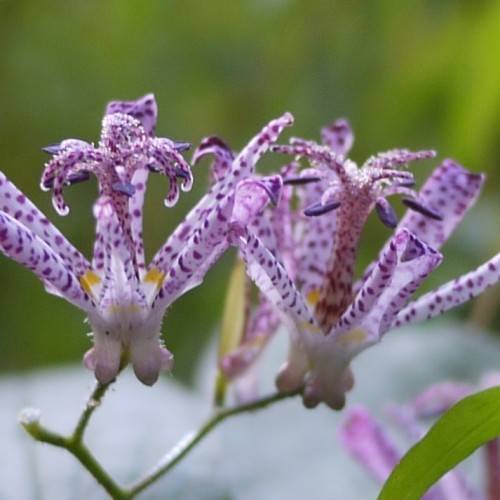
Japanese toad lily
Tricyrtis hirta
Cycle:
Herbaceous Perennial
Watering:
Frequent
Hardiness Zone:
4 - 8
Flowers:
Flowers
Sun:
Part shade,full shade
Leaf:
Yes
Growth Rate:
Low
Maintenance:
Low
Drought Tolerant:
Yes
Care Level:
Medium
watering
Japanese toad lily requires moist soil and regular watering. During the growing season (spring and summer), water the plant thoroughly when the surface of the soil is dry to the touch. Water it again only after the soil feels dry once more. This typically works out to about 1-2 waterings per week, depending on the temperature and humidity. During the dormant period in winter, reduce the amount of water significantly. The soil should be allowed to dry out between waterings.
sunlight
The Japanese toad lily requires partial shade to partial sun for optimal growth and flowering. During spring and summer, it should receive direct sunlight for 4 - 5 hours a day, preferably in the mornings or late afternoons. During the winter, when the plant is dormant, the Japanese toad lily needs only indirect sunlight.
pruning
When it comes to pruning Japanese toad lily (Tricyrtis hirta), it’s best to do so when the plant is in an early-to-mid stage of growth. Prune away any dead foliage and flowers to help the plant stay strong and healthy. During flowering, deadheading also helps with bloom production. After flowering, pruning back shoots by 1/4 to 1/3 can help to maintain a more compact form for the plant. Generally speaking, avoid heavy pruning since it may prevent flowering and decrease the plant’s vigor.
